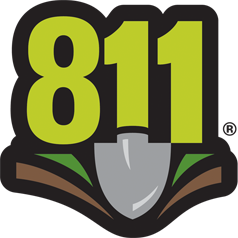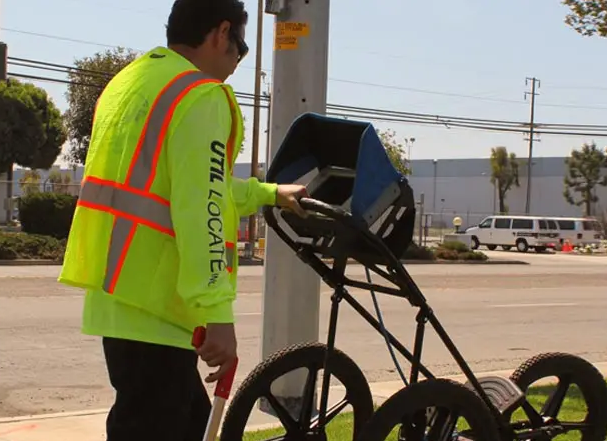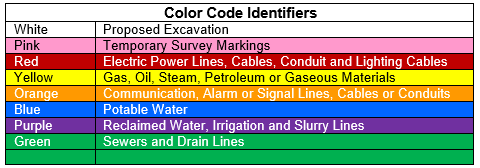
Preventing Damage to Underground Utilities
By Jerome E. Spear, CIH, CSP, FAIHA and Alexander Ritchie
The possibilities of damaging underground utilities exist at every drilling site. Inadvertently severing an underground power line, rupturing a natural gas line, or damaging other underground utilities can result in significant consequences in terms of disrupting essential services, costly repairs, downtime, and potentially serious injuries and/or death. The number of incidents involving damage to underground utilities submitted via the Damage Information Reporting Tool (DIRT) report in 2019 was 453,766 for the United States. To prevent these incidents, we must first understand the possible causes and the industry practices that are in place to prevent these types of incidents.
Root Causes of Damages to Underground Utilities
The top root cause categories for incidents resulting in underground utilities are shown in Figure 1.

OSHA has specific requirements (29 CFR 1926.651) designed to protect employees and prevent accidental damage to underground installations, including establishing the location of underground installations prior to beginning excavation activities. According to the 2019 DIRT Report, calling 811 before digging is the most important precaution that professionals and homeowners can take before digging or other intrusive activities (CGA, DIRT, 2020). When an excavator or other party performing intrusive activities notifies a one-call center before digging, damage can be avoided more than 99 percent of the time.
The root cause category, Excavation Practices Not Sufficient, includes clearance not maintained, hand tools not used, marks not maintained, test hole not used to verify, exposed facility not supported, backfilling improper, and other excavation practices determined not to be sufficient (CGA, DIRT, 2020).
Underground utilities can be located by many methods, including utility owner records, other sources of information, and utility locating techniques. However, some methods of locating utilities result in more uncertainty than other methods. The damage root cause group, Locating Practices Not Sufficient, includes 11 possible locating root causes. This was amended from the four pre-2018 causes to better distinguish the root causes and increase user comprehension. Of the events that included facility damages and for which a locate request was made, the majority (51%) were due to a locator error and 27% were attributed to abandoned facilities with inadequate information. The remaining causes were due to incorrect records (10%), not marked/incomplete (6%), and an unlocatable/tracer wire issue (6%) (CGA, DIRT, 2020).
Call Before You Dig!
 The first step in preventing contact with underground utility lines is to call the local one-call agency. This step was simplified in 2007 when the Federal Communications Commission (FCC) designated the national toll-free 811 number to be the national three-digit “Call Before You Dig” number for the United States. This number rings the one-call center nearest to where the call was placed. One-call then provides member organizations that locate and mark utilities they own at the location specified in the one-call ticket. The call must be placed at least 48 hours before work is scheduled to begin.
The first step in preventing contact with underground utility lines is to call the local one-call agency. This step was simplified in 2007 when the Federal Communications Commission (FCC) designated the national toll-free 811 number to be the national three-digit “Call Before You Dig” number for the United States. This number rings the one-call center nearest to where the call was placed. One-call then provides member organizations that locate and mark utilities they own at the location specified in the one-call ticket. The call must be placed at least 48 hours before work is scheduled to begin.
Utility locates and markings are often made in utility easements only, not on private property. Therefore, if drilling and/or other intrusive activities will be performed outside easements, the underground lines will not be marked.
There are also many variables concerning locating and marking underground utility lines. These include:
- Some utility owners take the position that a service line belongs to the property owner.
- Power and communications cable and water/sewer lines serving buildings of educational institutions, government complexes, and office parks are on private property and are not covered by one-call.
- One-call locates do not provide depth, but rather a window of horizontal space where utilities are estimated to be buried.
White Lining the Dig Site
White lining is a best practice endorsed by the Common Ground Alliance (CGA) (CGA, 2020). Physical white lining requires that the excavator (or drilling operator) to pre-mark the dig (or drill) area with white paint, or an equivalent means. While this practice is known to reduce damages, it may also add costs to a job. However, digital white-lining is a recent development that allows the landscape to be viewed and the boundaries of the dig (or drill) area remotely outlined through high-resolution aerial imagery. A review of this virtual white-line method by the CGA found several potential benefits of the process including better record keeping, associated cost savings, and high-quality information helpful in better determining the excavation site. However, some states such as Minnesota require physical white lines to be present (CGA, 2021).
Utility Locating Techniques
 Underground utilities may be found by many methods, including from existing utility owner records, other sources of information, and/or locating technology. The source of information and method(s) used to locate underground utilities could impact the reliability and accuracy of identifying and locating underground utilities.
Underground utilities may be found by many methods, including from existing utility owner records, other sources of information, and/or locating technology. The source of information and method(s) used to locate underground utilities could impact the reliability and accuracy of identifying and locating underground utilities.
In addition to power lines, there are phone lines, gas lines, water lines, and sewer lines that run underground. Different detection techniques must be used for different types of buried lines. For instance, detection of metal cables and pipes can be done using electromagnetic devices while radiolocation devices are used for detecting non-ferrous lines (e.g., plastic, concrete, etc.). Radiolocation is the process of using radio waves to find the location, whereas, electromagnetic equipment consists of a transmitter and a receiver.
Since there are different types of materials used in underground utilities, not all types can be detected with conventional methods. Non-conventional utility locating techniques include acoustic locating, ground penetrating radar (GPR), and magnetic locators or metal detectors. An acoustic locator is most often used to detect and trace nonmetal water lines and can also be used in identifying locations of plastic gas lines. GPR detection is an electromagnetic method that is often used to augment other locating techniques. GPR is able to generate 3D underground images of pipes, power, sewage, and water mains. Magnetic locators or metal detectors and magnetometers are often used to locate buried metal objects other than pipes.
Current utility locating technology cannot assure a 100% detection of every underground utility line and pipe. There are limitations with each utility locating technique, which should be considered.
Understanding Locating and Marking Practices
Operator markings of facilities include the appropriate color for the facility type, their company identified (i.e., name, initials, or abbreviation) when other companies are using the same color, the number and width of their facilities, and a description of the facility. A combination of paint and flags is used to identify the operator’s facility(s) at or near an excavation (or drill) site. Color code identifiers are summarized in the following table:

Refer to CGA Best Practices Guide (2021) for more specific guidelines for locating and marking practices.
Additional Warning Signs
When an excavator arrives at a job site after contacting the local One Call Center to get the job site located, the first step is to look for signs of underground utilities (such as marking flags, paint, pedestals, fire hydrants, and other above ground indicators. Even though these indicators are identified and verified that there are no facilities within the dig (or drill) area, be alert to additional warning signs as you start the excavation or drilling operations. If you see any visual signs of a buried utility while excavating or drilling, stop immediately and hand dig until the utility is exposed. Contact the utility owner as necessary and do not proceed until the utility is fully exposed and identified.
Conclusions
Excavators should establish a detailed work plan and train their employees on the proper procedures for determining the locations of underground utilities, contact and coordinate with the local one call agency and utility companies to establish the locations of the underground installations, and take the necessary precautions to prevent damage to underground utility installations. If an underground utility is damaged,
notify the utility operator immediately. The utility operator is in the best position to determine the hazards associated with the damage and implement appropriate countermeasures. If the damage results in the release of hazardous gases or liquids, both the utility operator and appropriate emergency response officials should be notified immediately.
References
Common Ground Alliance (CGA). (2020). DIRT Annual Report for 2019 (Vol. 16, Rep.). Common Ground Alliance.
Common Ground Alliance (CGA). (2020, March). Best practices VERSION 17.0. Retrieved May 27, 2021, from https://bestpractices.commongroundalliance.com/1-Introduction/101-Best-Practices-Manual-Version-170#mainContentAnchor
Common Ground Alliance (CGA). (2021, May). Technology Report 2021 (Rep.). Retrieved May 27, 2021, from CGA website: https://commongroundalliance.com/Tools-Resources/Resources-Library
Charles Machine Works Inc. (2012, April). Best Practices for Damage Prevention. Underground Focus, 26(2), 26-27. Retrieved May 27, 2021, from http://www.sub-t.co/underground-focus
OSHA. (n.d.). Excavations, Subpart P. Specific Excavation Requirements, 29 CFR 1926.651.

Share This Article!

